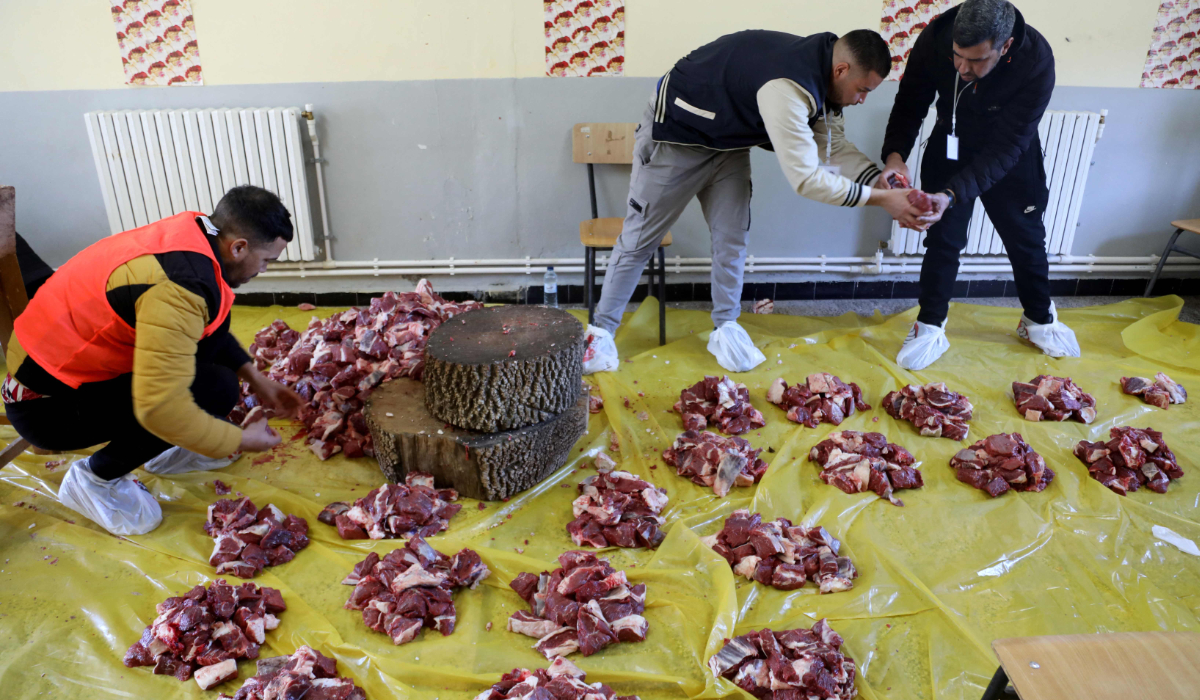LOS ANGELES: A woman allegedly known as the “Ketamine Queen,” who prosecutors say sold “Friends” actor Matthew Perry the drugs that would kill him, didn’t look very regal when she appeared in a Los Angeles court this week.
If they can prove their case against Jasveen Sangha — that she made thousands of dollars from the troubled celebrity, selling him ketamine from her North Hollywood drug emporium — she might never see the outside of prison again.
In the meantime, her court appearance in a green Nirvana sweatshirt and baggy sweatpants was a far cry from the party-filled jet set lifestyle that investigators say she normally leads.
The dual British-American national was one of five people charged in connection with the October 2023 death of the much-loved Perry, who was found unresponsive in the pool of his swanky Los Angeles home.
Others included Perry’s live-in personal assistant, a go-between and two medical doctors who are alleged to have sold $12 vials to the celebrity for as much as $2,000 each, as they exchanged texts wondering “how much this moron will pay.”
But it was the arrest and charging of Sangha that has particularly shone a light on the seedy side of Hollywood glamor.
Court documents allege Sangha, 41, ran a huge drug operation out of her comfortable apartment — dubbed the “Sangha Stash House” — where investigators discovered ketamine, methamphetamine, cocaine and prescription medication like Xanax.
Her source for the ketamine, she told broker Erik Fleming — who is also charged in connection with Perry’s death — was a “master chef” and a “scientist” through whom she boasted she could “fill any order.”
“She only deal[s] with high end and celebs,” Fleming is said to have written to Perry’s personal assistant. “If it were not great stuff she’d lose her business.”
Photos posted on the Internet show Sangha partying with actor Charlie Sheen, a man with well-documented addiction problems.
Her own Instagram account is packed with proof of a glitzy lifestyle that appears to include trips on private jets and plates of caviar in an airport lounge.
Other photos show her sporting a range of designer wear, including jewelry from Van Cleef & Arpels, shoes by Louis Vuitton and clothes from Chanel.
But the high-roller lifestyle was apparently funded through a trade in misery, exploiting the desperation of addicts like Perry.
The dozens of doses of ketamine she allegedly sold him came in unmarked glass vials with a cheap blue plastic cap.
Prosecutors say Sangha was a consummate saleswoman, offering a sample for Perry to try before he committed serious money.
“It’s unmarked but it’s amazing,” she allegedly texted the middleman. “He [can] take one and try it and I have more if he likes.”
And the final batch Sangha is alleged to have supplied — the one that resulted in Perry’s death at just 54 — came with a sweetener: ketamine lollipops, prosecutors say.
Hours after news of the actor’s death emerged, Sangha set out to cover her tracks, investigators say, ordering middleman Fleming to “delete all our messages.”
Two weeks later, she jetted off to Tokyo, posting smiling pictures of her posing in a kimono.
The trip was one of around a dozen foreign jaunts she has taken since Perry died, a Los Angeles judge heard on Wednesday, which have also included Antigua and Mexico.
That judge remanded Sangha in custody on Wednesday and ordered her to stand trial in October, after hearing her deny all charges.
If convicted of conspiracy to distribute ketamine and the other charges she faces, Sangha could be jailed for the rest of her life.
Salvador Plasencia, one of the doctors also charged with supplying Perry, also denied the charges he faces.
The other defendants have either pleaded guilty or agreed to do so in relation to their charges. They face between 10 and 25 years in prison.
Ketamine Queen: the alleged dealer charged over Matthew Perry’s death
https://arab.news/2j6sn
Ketamine Queen: the alleged dealer charged over Matthew Perry’s death





























